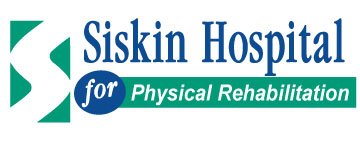From Therapist to Survivor: A Journey of Resilience and Hope in Stroke Recovery
For the past 30 years, stroke rates for Americans under the age of 49 have continued to rise. One Siskin Outpatient Therapy associate, a newer member to our team, has first-hand experience on how quickly life can change due to a stroke.
Stephanie Hopwood, PT, DPT, CSRS, was a decade into her career as a physical therapist and only 40-years-old when her life was altered dramatically by a stroke. During her normal evening routine, she noticed a line in her vision and weakness in her left side. Her husband knowing the signs of a stroke acted quickly and took her to the emergency room where they confirmed his fear. Earlier that day, Stephanie had popped her neck, resulting in a torn right carotid artery and subsequent blood clots in the right side of her brain.
After emergency surgery where they removed multiple clots and placed a stent to repair the damage to her carotid, she began intensive rehabilitation therapy including physical, occupational and speech.
“It was weird being on the other side of therapy and it was hard. Especially speech and occupational therapy as my brain did not have the same organizational skills as it did before the stroke,” said Hopwood.
Hopwood returned to work part-time only six weeks after her stroke. She believes if it weren’t for her husband’s fast response, she would not have been able to continue being a physical therapist, but she still had to build up her strength.
“I saw two patients my first day back and was utterly mentally exhausted,” said Hopwood.
During this transitional phase, she began writing down her experiences to help her remember in the future and realized sharing her story might help others facing similar situations.
“I didn’t want it to be a ‘how-to’ on post-stroke exercises. I focus more on having a good mindset throughout the recovery process,” said Hopwood.
Before and after her stroke, Hopwood says that the people who have the best outcomes are those with the best mindset. Not only positive thinking but also the determination and willingness to do whatever it takes to get better. That belief inspired her to write “Stroke Recovery Momentum: How to Keep Moving Forward.”
During her research for clinics and organizations that can also be a support for stroke patients, she discovered Post Stroke a local non-profit, founded by Elyse Newland, OT. Post Stroke aims to reach patients in their homes through the power of social media, providing short, easy-to-understand exercises geared toward stroke recovery.
Her ultimate goal for the book is to help those who have also suffered from a stroke, and has decided one way of doing so is partnering with Newland to support Post Stroke. During the month of May, which is National Stroke Awareness Month, people who donate to Post Stroke will receive a copy of her book. “Stroke Recovery Momentum: How to Keep Moving Forward” will also be available for purchase at www.post-stroke.org.
While Hopwood has only been a Chattanooga resident and Siskin Hospital team member for a short time, she has already had a tremendous impact on her patients and our greater community.


